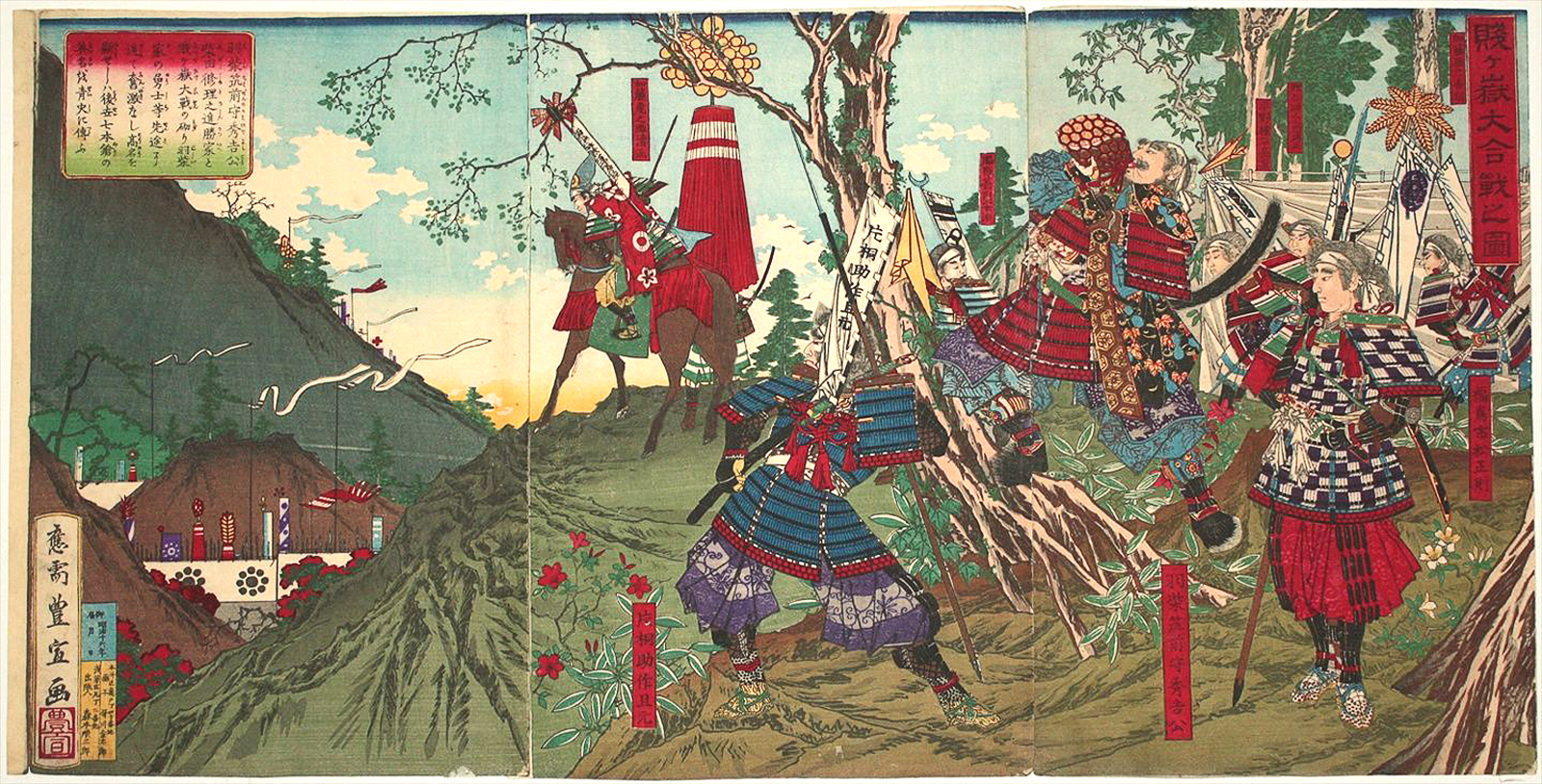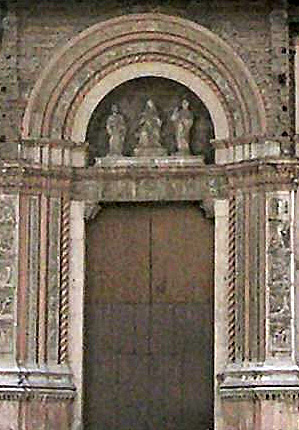|
Crucifixion With Saints (Annibale Carracci)
''Crucifixion with Saints'' or ''Crucifixion with Mourners and Saints Bernardino of Siena, Francis of Assisi and Petronius'' is an oil painting on canvas executed in 1583 by the Italian painter Annibale Carracci, now in the church of Santa Maria della Carità in Bologna. The work was originally sited in the Macchiavelli chapel in San Nicolò di San Felice, Bologna, next to Santa Maria della Carità, which was destroyed by bombing during the Second World War. It was then temporarily moved to the Soprintendenza di Bologna and finally to its current home. Dating In ''Felsina Pittrice'' in 1678, Carlo Cesare Malvasia stated that Carracci produced the work when he was eighteen (defining it as "the first work ever to come from the great Annibale's brush") and that the commission was initially offered to Ludovico Carracci, who decided the offered payment was too little and so passed it onto his young cousin Annibale. However, this account is unreliable, since cleaning in the 1920s revea ... [...More Info...] [...Related Items...] OR: [Wikipedia] [Google] [Baidu] |
1583 Annibale Caracci, Crucifixion Santa Maria Della Carità, Bologna
Events January–March * January 1 – The Duchy of Savoy adopts the Gregorian Calendar, replacing the Julian Calendar. * January 18 – François, Duke of Anjou, attacks Antwerp. * February 4 – Gebhard Truchsess von Waldburg, newly converted to Calvinism, formally marries Agnes von Mansfeld-Eisleben, a former canoness of Gerresheim, while retaining his position as Electorate of Cologne, Archbishop-Elector of Cologne. * February 7 – In the Netherlands, the Siege of Eindhoven (1583), Siege of Eindhoven by the Spanish Army begins.Mack P. Holt, ''The Duke of Anjou and the Politique Struggle During the Wars of Religion'' (Cambridge University Press, 2002) p.190 The walled city will fall in April. * March 10 (February 28 O.S.) – The ''Queen Elizabeth's Men'' troupe of actors is founded in Kingdom of England, England by order of Queen Elizabeth to Edmund Tilney, the royal Master of the Revels. April–June * April 9 – A Burmese Army fo ... [...More Info...] [...Related Items...] OR: [Wikipedia] [Google] [Baidu] |
Agostino Carracci
Agostino Carracci ( , , ; also Caracci; 16 August 1557 – 22 March 1602) was an Italian painter, printmaker, tapestry designer, and art teacher. He was, together with his brother, Annibale Carracci, and cousin, Ludovico Carracci, one of the founders of the Accademia degli Incamminati (Academy of the Progressives) in Bologna. Intended to devise alternatives to the Mannerist style favored in the preceding decades,Agostino Carracci at Getty this teaching academy helped propel painters of the School of Bologna to prominence. Life Agostino Carracci was born in |
Chiesa Di San Sebastiano (Venezia)
Chiesa (Italian, 'church') may refer to: People with the surname *Andrea Chiesa (born 1966), Swiss Formula One racer * Anthony della Chiesa (1394–1459), Italian Dominican friar * Bruno della Chiesa (born 1962), European linguist * Deborah Chiesa (born 1996), Italian tennis player * Enrico Chiesa (born 1970), Italian footballer *Federico Chiesa (born 1997), Italian footballer, son of Enrico Chiesa * Gemma Sena Chiesa (1929–2024), Italian archaeologist *Giacomo della Chiesa (1854-1922), Italian bishop, became Pope Benedict XV * Giulietto Chiesa (1940-2020), Italian journalist and politician * Giulio Chiesa (1928-2010), Italian pole vaulter * Gordon Chiesa, American basketball coach * Guido Chiesa (born 1959), Italian director and screenwriter * Jeffrey S. Chiesa (born 1965), U.S. Senator; American lawyer; former Attorney General of New Jersey * Laura Chiesa (born 1971), Italian fencer * Marco Chiesa (born 1974), Swiss politician *Mario Chiesa (cyclist) (born 1966), Italian cyclis ... [...More Info...] [...Related Items...] OR: [Wikipedia] [Google] [Baidu] |
Paolo Veronese
Paolo Caliari (152819 April 1588), known as Paolo Veronese ( , ; ), was an Italian Renaissance painter based in Venice, known for extremely large history paintings of religion and mythology, such as ''The Wedding at Cana (Veronese), The Wedding at Cana'' (1563) and ''The Feast in the House of Levi'' (1573). Included with Titian, a generation older, and Tintoretto, a decade senior, Veronese is one of the "great trio that dominated Venetian painting of the ''cinquecento''" and the Late Renaissance in the 16th century.Rosand, 107 Known as a supreme colorist, and after an early period with Mannerism, Paolo Veronese developed a naturalist style of painting, influenced by Titian. His most famous works are elaborate narrative cycles, executed in a dramatic and colorful style, full of majestic architectural settings and glittering pageantry. His large paintings of biblical feasts, crowded with figures, painted for the refectories of monasteries in Venice and Verona are especially famous ... [...More Info...] [...Related Items...] OR: [Wikipedia] [Google] [Baidu] |
Prospero Fontana
Prospero Fontana (1512–1597) was a Bolognese painter of late Renaissance and Mannerist art. He is perhaps best known for his frescoes and architectural detailing. The speed in which he completed paintings earned him commissions where he worked with other prominent artists of the period. He was a prominent figure in the city of Bologna, serving as official arbitrator in the business disputes of local artists. In his later career Fontana trained younger painters, including his own daughter Lavinia. Professional life Prospero Fontana was likely taught by Innocenzo di Pietro Francucci da Imola, but there is a degree of uncertainty surrounding the relationship between the two men. As a teenager, Fontana was an assistant on Perino del Vaga's Palazzo Doria in Genoa. However, art historians cannot definitively identity Fontana's contributions to the decorations. In the 1550s, Fontana painted Pope Julius III's portrait and was pensioned at the pontifical court. He also decorated t ... [...More Info...] [...Related Items...] OR: [Wikipedia] [Google] [Baidu] |
Agostino Carracci, Crucifixion After Paolo Veronese
Agostino may refer to: *Agostino (name) * ''Agostino'' (film), an Italian film directed by Mauro Bolognini * ''Agostino'' (novel), a short novel by Alberto Moravia *, an Italian coaster See also *Agostini (other) *D'Agostino (other) D'Agostino, a Sicilian noble lineage originated at least in the thirteenth century D'Agostino may also refer to: * D'Agostino (surname), an Italian surname * D'Agostino's K-squared test, a goodness-of-fit measure in statistics * D'Agostino Su ... * Augustino (other) {{disambiguation ... [...More Info...] [...Related Items...] OR: [Wikipedia] [Google] [Baidu] |
Rachele (Michelangelo)
Rachele may refer to: People Given name * Rachele (given name), a feminine given name (including a list of people with the name) Surname * Josh Rachele (born 2003), Australian rules footballer * Sara Rachele (born 1988), American folk singer Other * 674 Rachele, a minor planet orbiting the Sun * Villa Rachele, a district of Cinisello Balsamo in Italy See also * Rachel (other) * Rachal (other) {{Disambiguation ... [...More Info...] [...Related Items...] OR: [Wikipedia] [Google] [Baidu] |
Basilica Di San Petronio
The Basilica of San Petronio is a minor basilica and church of the Archdiocese of Bologna located in Bologna, Emilia Romagna, northern Italy. It dominates Piazza Maggiore. The basilica is dedicated to the patron saint of the city, Saint Petronius, who was the Bishop of Bologna in the fifth century. Construction began in 1390 and its main facade has remained unfinished since. The building was transferred from the city to the diocese in 1929; the basilica was finally consecrated in 1954. It has been the seat of the relics of Bologna's patron saint only since 2000; until then, they were preserved in the Santo Stefano church. History Construction In 1388, the ''Consiglio Generale dei Seicento'' prepared the construction of the church as a civic temple. To make room for the church, the adjacent Curia of Sancti Ambrosii was demolished, together with the majority of one of the city's burgs, including at least eight churches and towers. The first stone of construction was laid on ... [...More Info...] [...Related Items...] OR: [Wikipedia] [Google] [Baidu] |
Basilica Di San Giacomo Maggiore
The Basilica of San Giacomo Maggiore is an historic Roman Catholic church in Bologna, region of Emilia Romagna, Italy, serving a monastery of Augustinian friars. It was built starting in 1267 and houses, among the rest, the Bentivoglio Chapel, featuring numerous Renaissance artworks. History A community of hermits founded by the Blessed John the Good of Modena had established itself near the walls of Bologna, along the Savena river, as early as 1247. They founded a monastery with its church, dedicated to St. James the Greater (). The hermits were merged in 1256 by the pope with other eremitical communities of the region to form the Order of Hermits of St. Augustine, with one of their number being elected the first Prior General of the new Order. As they then needed a larger religious complex within the walls, in 1267 construction was undertaken of the new church in the present location. The edifice was finished in 1315, but its consecration took place in 1344, with the completio ... [...More Info...] [...Related Items...] OR: [Wikipedia] [Google] [Baidu] |




